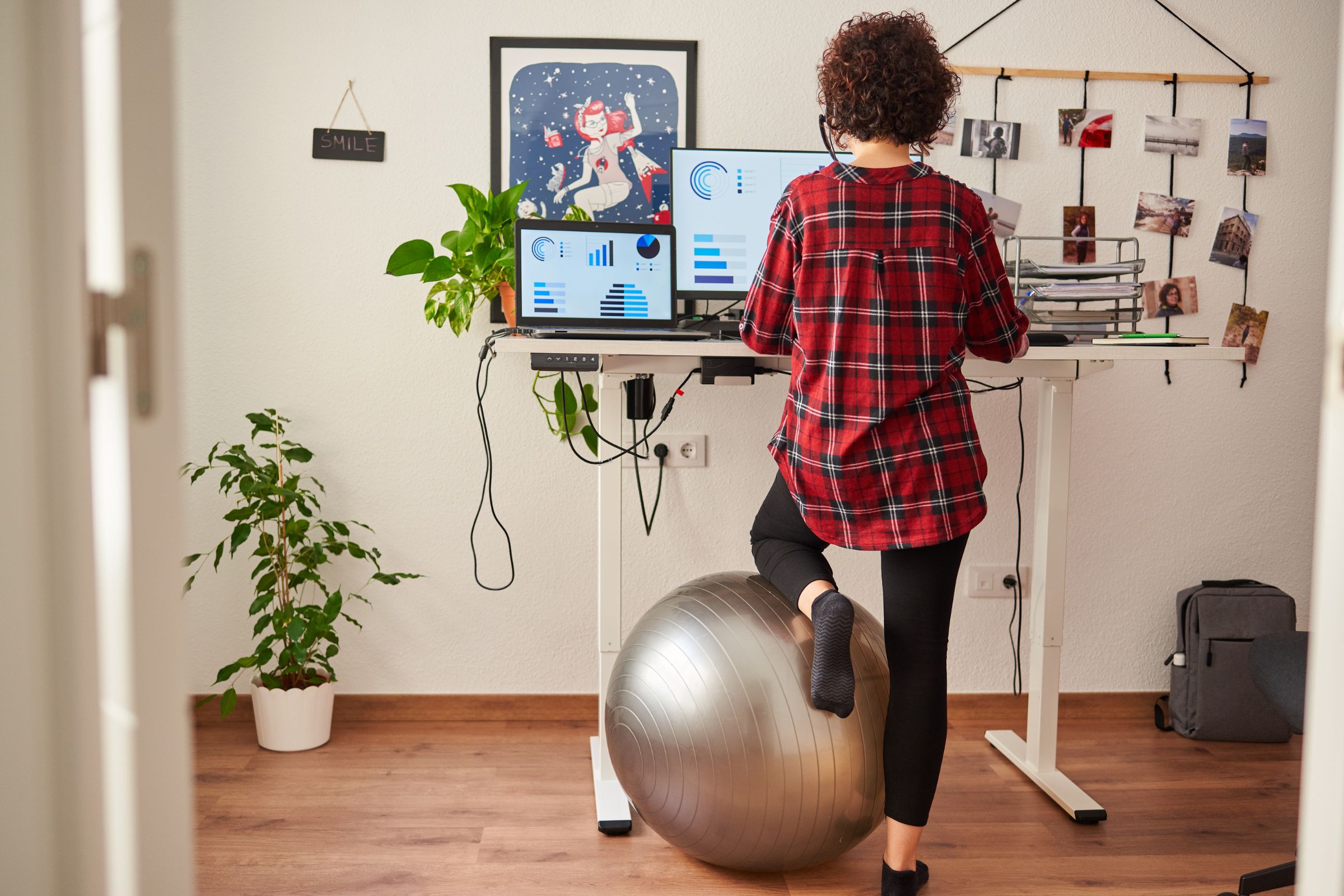The Rise of Ergonomic Workstations As work environments evolve, so does the need for ergonomic…

Do We Really Need to Address Homeworker Safety?
By David Fletcher, M.B.A
COVID-19 had undoubtedly interrupted our everyday lives in ways that we could never imagine. When the virus is under control, we return to where we have started. Companies now face the most significant challenge: do we reopen or continue to allow employees to work from home? Regardless of the decision made, employee safety is a paramount factor that needs to be addressed.
Over the last 24 months, many organizations opted to work from their kitchens, dining rooms, and basements. These transitions were almost immediate, and there was little time to make decisions that would further impact the employee’s health and well-being.
Companies would argue that they are not responsible for a home office setting, nor do they need to provide equipment to the home worker. This resistance increases the exposure to workplace injury, but the chances of employees filing workers comp lawsuits also increases significantly.
Whether an employee is working from home or has returned to the office, an employer must provide a standard of care to its employees. The duty of care requires that a person act toward others and the public with the watchfulness, attention, caution, and prudence that a reasonable person in the circumstances would use (law.com, 2021).
In March of 2020, employers all through the country were scrambling for answers on what is the best way to go forward. Many organizations resorted to quick fixes such as laptops, cheap chairs, and mini desks. Many employers fail to recognize the duty of care within the employee and employer relationship.
Employers can be held liable for their employee’s work-related injuries and injuries they could sustain on the employee’s property. This liability could extend to workers comp claims and if a customer were injured visiting the employee’s home (Hasner, 2020).
Many H.R. professionals and Risk Managers speak to this topic, yet it continues to be ignored. The question that needs to be brought to light is the actual cost of a worker’s comp claim and its impact on your company’s future.
Worker’s comp claims have both direct and indirect costs associated with them. Direct costs directly result from the claim itself—the direct costs related to a claim cover direct payments, medical bills, and attorney fees. Direct costs can significantly impact employers operating budgets (O.S.H.A., 2021).
The other costs associated with a claim are indirect. Indirect costs account for lost time in work, rehiring, training, and potential equipment damage costs. The costs are harder to measure because they include a multitude of variables. Regardless of the bottom line, there is always a business case for why an ergonomics program will help your company (OSHA., 2021).
Most importantly, preventative measures are put into place to prevent the immense costs of a worker’s comp claim. Loss Control expenses can be prevented with some simple preventive practices.
Invest in a Good Ergonomic Chair
The first step to correct ergonomics starts with the employee’s chair throughout the day. This investment will not only prevent potential injury while seating but will also help increase productivity.
Often upfront costs stand in the way of these investments. The true ergonomic principle of the seating suggests that the chair should support the person performing the task (Barzoloski, 2020).
Sit-to-Stand Tables or Risers
The workstation is the secondary essential we must address in correcting the work environment to a more ergonomically friendly workstation. Sit-to-stand table use has been demonstrated to show gains in productivity and provides the user the ability to switch postures throughout the day (Barzoloski, 2020).
The price of tables and risers has decreased significantly since their inception. More firms have begun to adopt tables due to demand and necessity. Measuring employee usage and calculating R.O.I. is more accessible with modern-day ergo software.
Use of Ergonomic Accessories
One of the most significant advantages that ergonomic keyboards and mice provide is the ability to decrease awkward wrist postures. Additionally, laptop stands or tablet accessories allow the user to be in a neutral posture. These minor investments can avoid injuries to the neck and shoulders from prolonged use (Barzoloski, 2021).
There is no doubt that employees can prevent injuries by taking the necessary steps to correct their seating, workstations, and desk accessories. Regardless of if the employee is working from home or back at the office, there is a duty to ensure that every employee has the right resources to prevent workplace injury.
References
Barzoloski, Danielle (2020) “Advanced Office Ergonomics Assessment Specialist Presentation.” Retrieved from https://thebackschool.net/account/course/22071/step/module/45
Hasner, Steven (2020) https://www.hasnerlaw.com/working-from-home-employer-obligations/
OSHA (2021) “Business Case Costs.” Retrieved from https://www.osha.gov/businesscase/costs
The People’s Law Dictionary (2021). “Duty of Care. www.law.com Retrieved from https://dictionary.law.com/Default.aspx?selected=599


